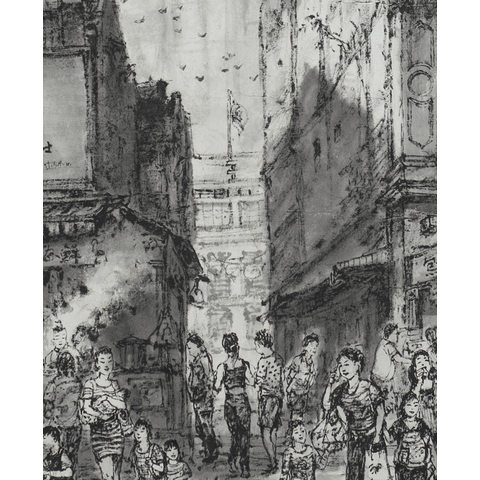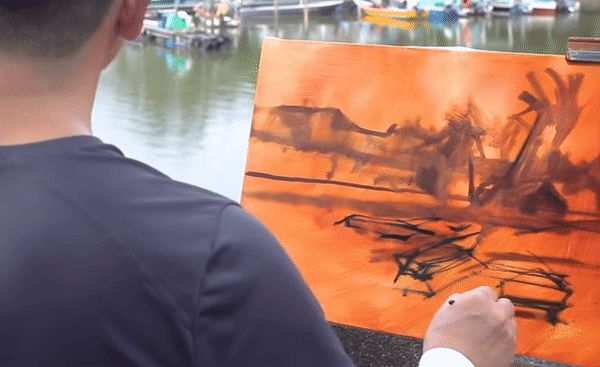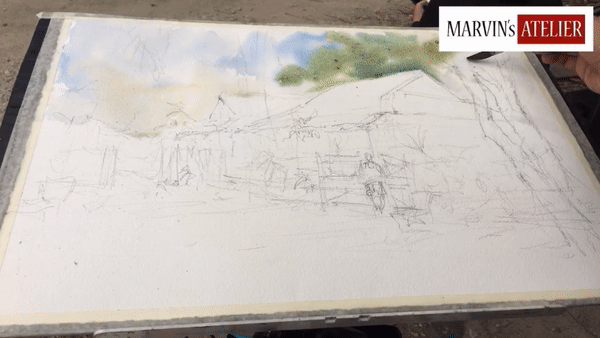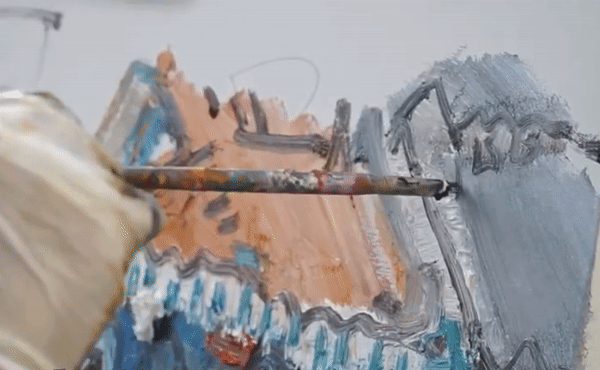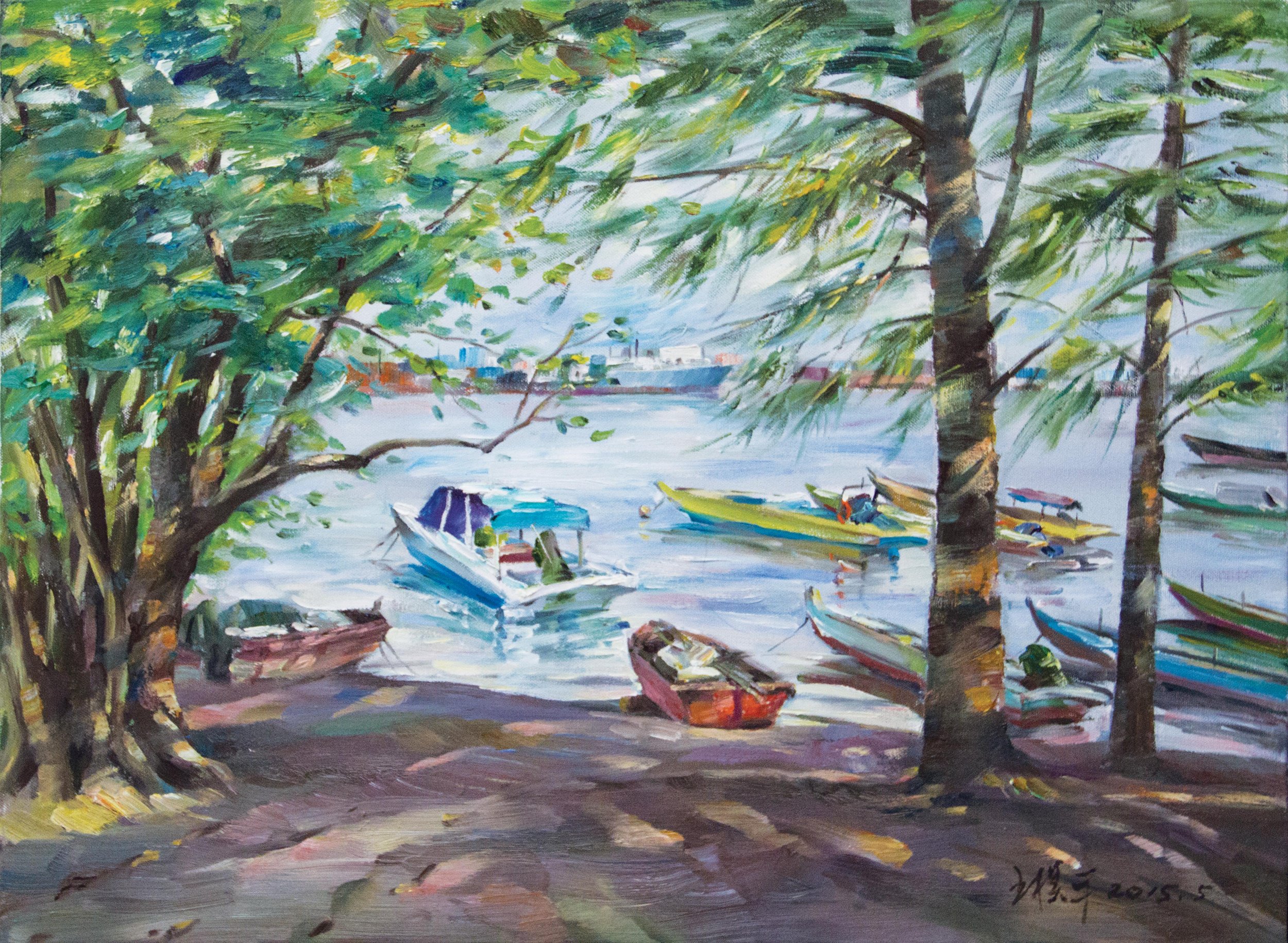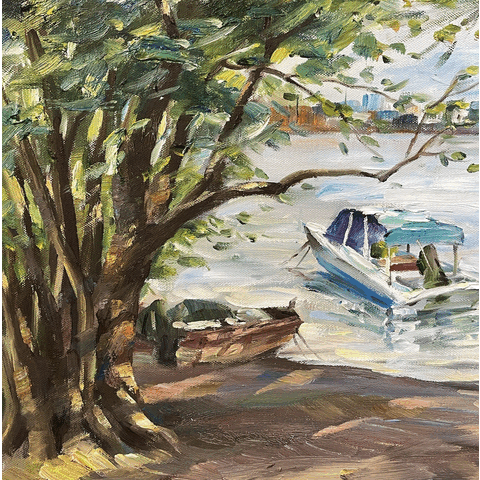The Art of Plein Air
Some may think that Plein Air paintings are just about painting outdoors, however many of us overlook the interesting facts and different methods of painting Plein Air.
What is a Plein Air Painting?
‘Plein Air’ is derived from a French expression which means “in the open air.” It is used by artists to describe the act of outdoor painting.
Singaporean artist Zhu Hong, working on a Plein Air painting along the streets of Jalan Besar.
Creating a Plein Air Painting
Preparation of the Painting Surface
The two most common mediums of paint would be oil and watercolour. While the two mediums vary in different ways, ranging from texture to application, both mediums would require a similar amount of preparation.
Watercolour is a medium with an impermanent binder that must be applied to an absorbent surface like watercolour paper.
While for painters who prefer to use oil paint, a cotton or linen canvas can be chosen based on the finish they are intending on.
Composition
While observing the site, painters will start off by sketching the overall compositions of the chosen landscape or subject.
Using diagonal lines and perspectives can also allow viewers to have a better immersive experience with the painting. It leads them through the space and out again. For example, the roads leading into a particular alley or even shafts of sunlight on the buildings leads the eyes of the viewers.
Subjects
Allowing breathing spaces by leaving empty areas can allow a better balance and improved engagement with the painting. In addition, repeating colours and shapes in the same composition would create visual cohesiveness in the artwork.
Using the example of the painting above by Tung Yue Nang, he uses a monochromatic depiction with Chinese ink washes throughout the composition, varying from light to dark shades and tones.
Close-ups on ‘Chinatown’ by Tung Yue Nang
Layering the surface
Using a thin wash of oil paint to prime and establish the main shapes of the subject/landscape. For example, artist Wang Fei can be seen sketching out the outlines of buildings or boats along the river in the clip below.
Wang Fei starting his oil painting at the Changi Village Jetty.
While for watercolour, very light washes are used and the main colours are
applied as the initial layers.
Marvin Chew working on his watercolour painting at Kampung Lorong, Buangkok.
Techniques of plein air
Direct and Indirect Painting
Direct painting implies that the painter would utilise thick brushstrokes with intended colours on the painting directly. It is done commonly with the medium of oil paint in a spontaneous and bold manner.
Zhu Hong paints with expressive strokes with thick oil paints.
Indirect painting however, is the build-up of transparent/thinner layers of paint.
Usually applied in watercolour paintings, it is a meticulous process that requires a substantial amount of time.
Marvin Chew finishing painting with the final layers.
Impressionism in Plein Air Paintings
Painters who does outdoor paintings are able to also create an Impressionist look with thick and opaque blots of paint with a relatively big bristle brush. This helps them achieve the desired ambience and intended visuals of the subjects.
‘Placid Bay’ by Wang Mo Ping.
Oil on canvas, 2015.
This paintings displays dabs of colours coming together to form the impression of scenery at West Coast Park.
Close-ups on Placid Bay by Wang Mo Ping




